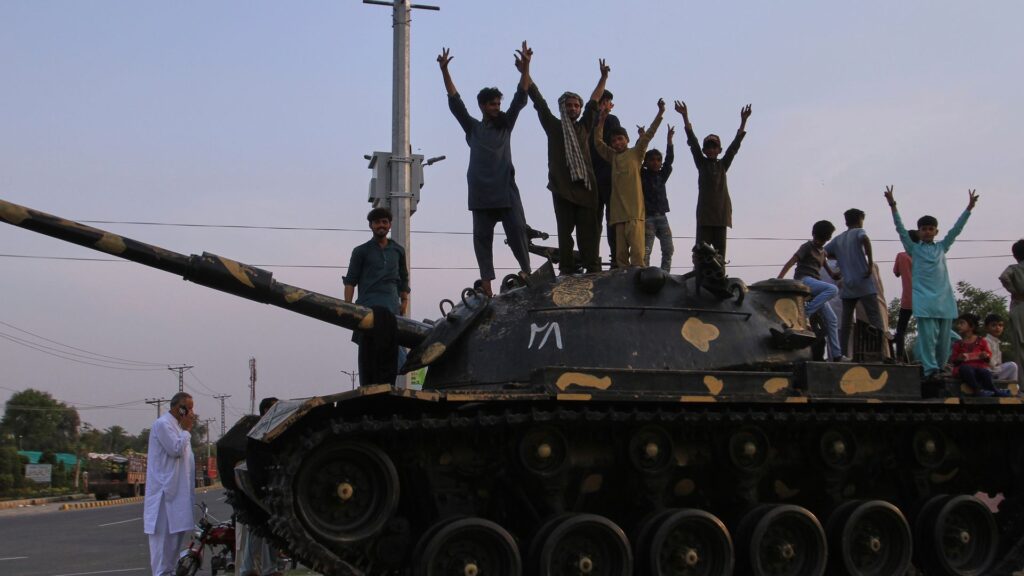Following weeks of escalating tensions between India and Pakistan, the two nuclear-armed countries agreed to a full and immediate ceasefire Saturday, May 10. The ceasefire, mediated by the U.S., was announced by President Donald Trump, who wrote on his social media platform, Truth Social, “Congratulations to both Countries on using Common Sense and Great Intelligence. Thank you for your attention to this matter!”
Ceasefire effective immediately
While announcing the agreement on Geo News, Pakistani Foreign Minister Ishaq Dar added that Saudi Arabia and Turkey also helped facilitate the deal, according to reporting from The Associated Press.
Writing on the social media platform X, Dar said, “Pakistan and India have agreed to a ceasefire with immediate effect. Pakistan has always strived for peace and security in the region, without compromising on its sovereignty and territorial integrity!”
The ceasefire was set to take effect 5 p.m. local time.
India’s foreign secretary, Vikram Misri, meanwhile, said the head of both countries’ military operations spoke Saturday and that both sides agreed to “stop all firing and military actions on land, and in the air and sea,” adding, “Instructions have been given on both sides to give effect to this understanding.”
The two countries’ military leaders are expected to speak again Monday, May 12, the AP quotes Misri as saying.
Pahalgam’s opening salvo
Pakistan and India have been exchanging gunfire, missile and drone strikes since April 22, when 26 people –– mostly Indian Hindus –– were killed after a group of gunmen opened fire at Pahalgam, a Kashmir Valley tourist destination. India accused Pakistan of being behind the attack, a charge Pakistan denies. By April 30, Pakistani officials were claiming that they had “credible intelligence” of impending Indian military action.
A week later, India launched missiles into Pakistan, killing 26 and injuring 46 more. Islamabad called that strike “an act of war.”
Unbiased. Straight Facts.TM
India and Pakistan both claim the entire territory of Kashmir. Two of the three wars the countries have fought since 1947 were over the region.
The fighting between India and Pakistan continued right up until the ceasefire was announced, with India saying it targeted Pakistani air bases on Saturday, in response to high-speed missiles that Pakistan launched towards military and civilian infrastructure in Punjab, India.
Some of those missiles targeted several air bases, including Nur Khan, Murid and Rafiqui. However, Pakistan reportedly intercepted most of the missiles and launched retaliatory strikes in turn.
More than 60 civilians have been killed and buildings destroyed in parts of both Indian and Pakistan-controlled Kashmir, a disputed region that each country administers part of, but which both claim as rightfully theirs in its entirety.
The top elected official in India’s Kashmir territory, Omar Abdullah, said that if the ceasefire had been reached “two or three days earlier, we might have avoided the bloodshed and the loss of precious lives.”
US role in talks
U.S. Secretary of State Marco Rubio and Vice President JD Vance had reportedly been hammering out the truce over the course of 48 hours, as they met with Indian Prime Minister Narendra Modi and his Pakistani counterpart, Shehbaz Sharif. India’s External Affairs Minister Subrahmanyam Jaishankar and the Pakistani Chief of Army Staff Asim Munir were also involved in the talks.
Now, the two governments will turn to a “neutral site,” where they will begin negotiating a “broad set of issues,” Rubio said.
America’s involvement in mediating the talks comes after Pakistan’s ambassador to the U.S., Rizwan Saeed Sheikh, made a direct plea to Trump for help with de-escalating the conflict. During a May 2 interview with Fox News Digital, Saeed said, “It could be an important part of President Trump’s legacy to attend to this situation — not with a Band-Aid solution, but by addressing the core issue: the Kashmir dispute.”


